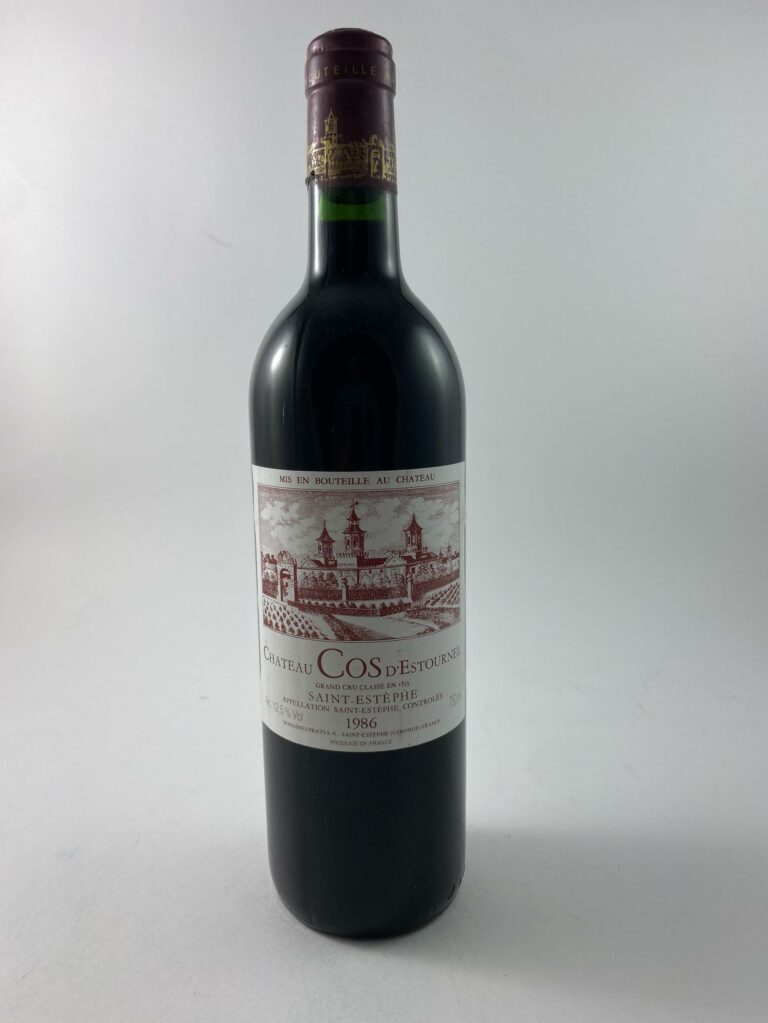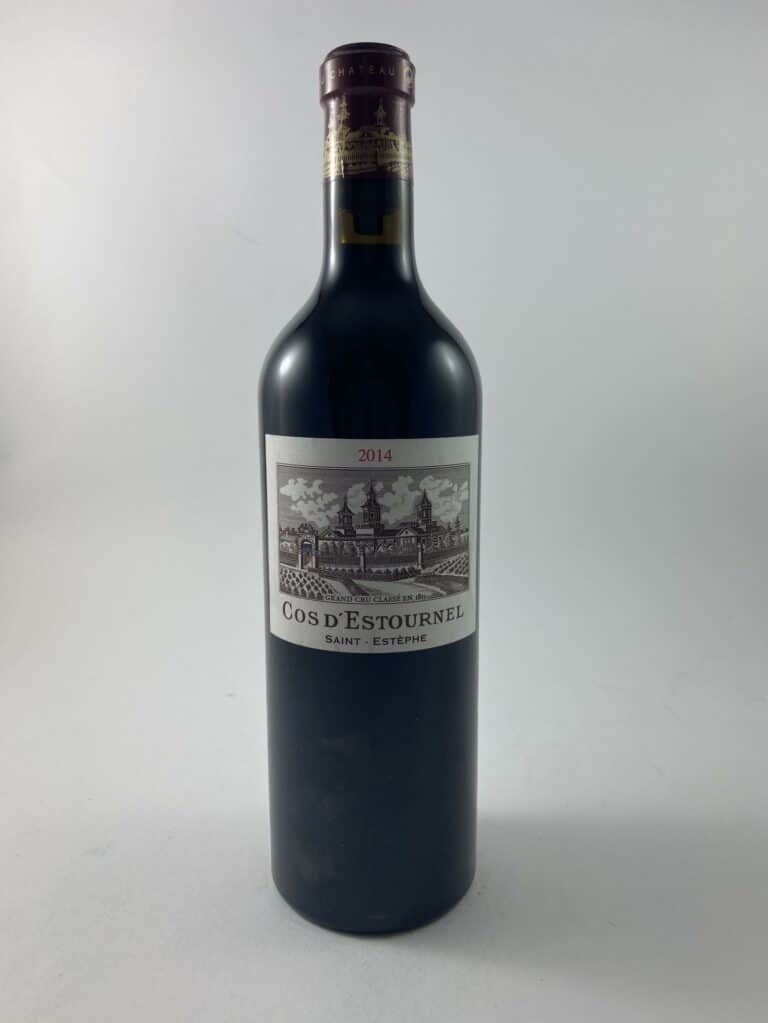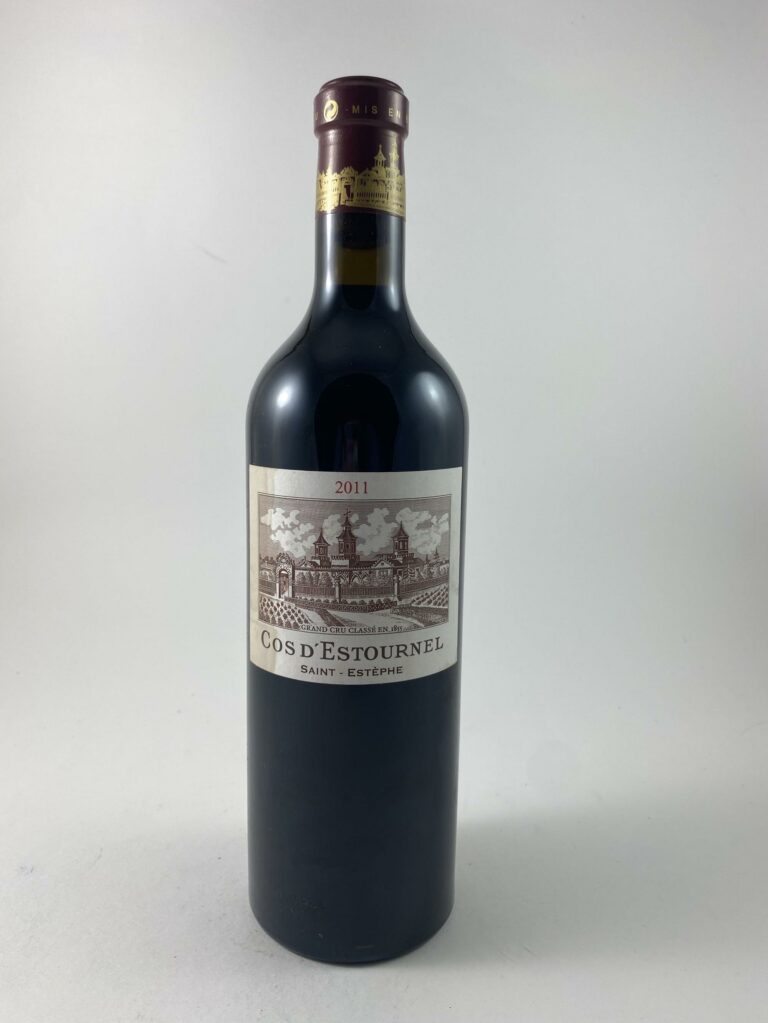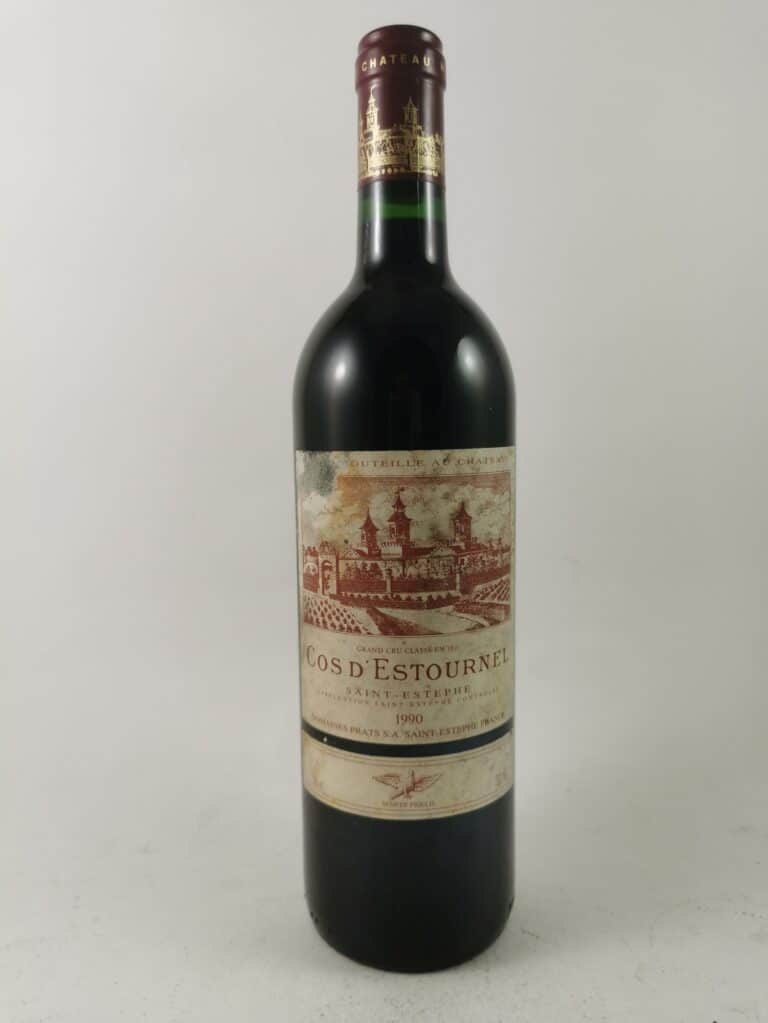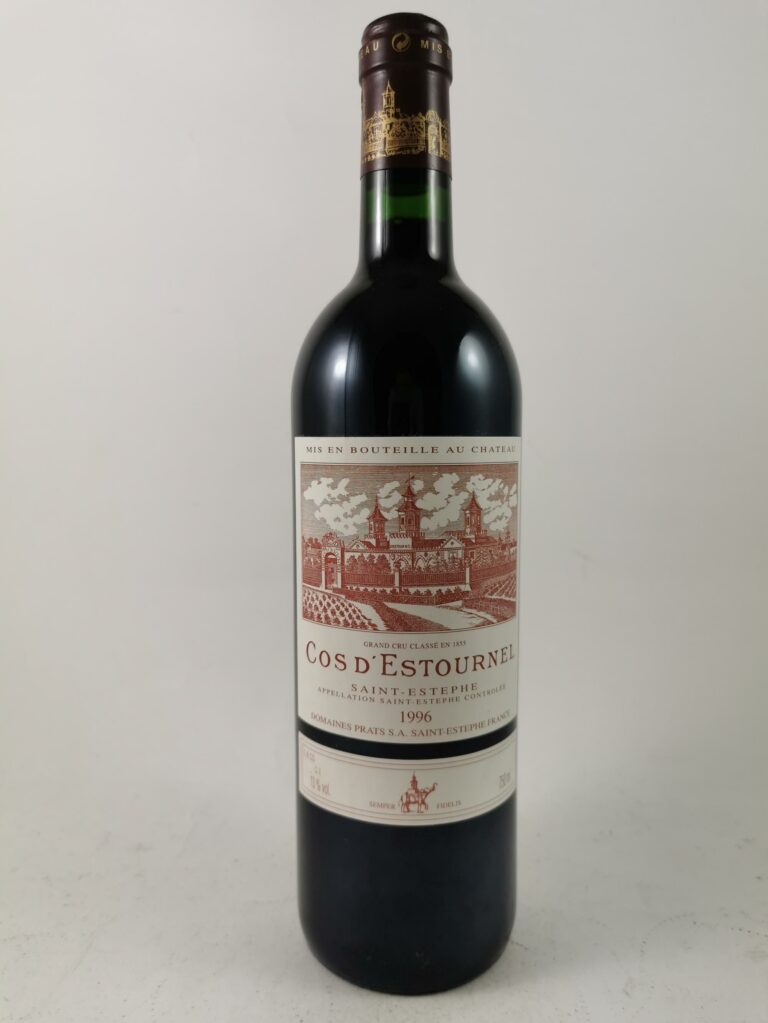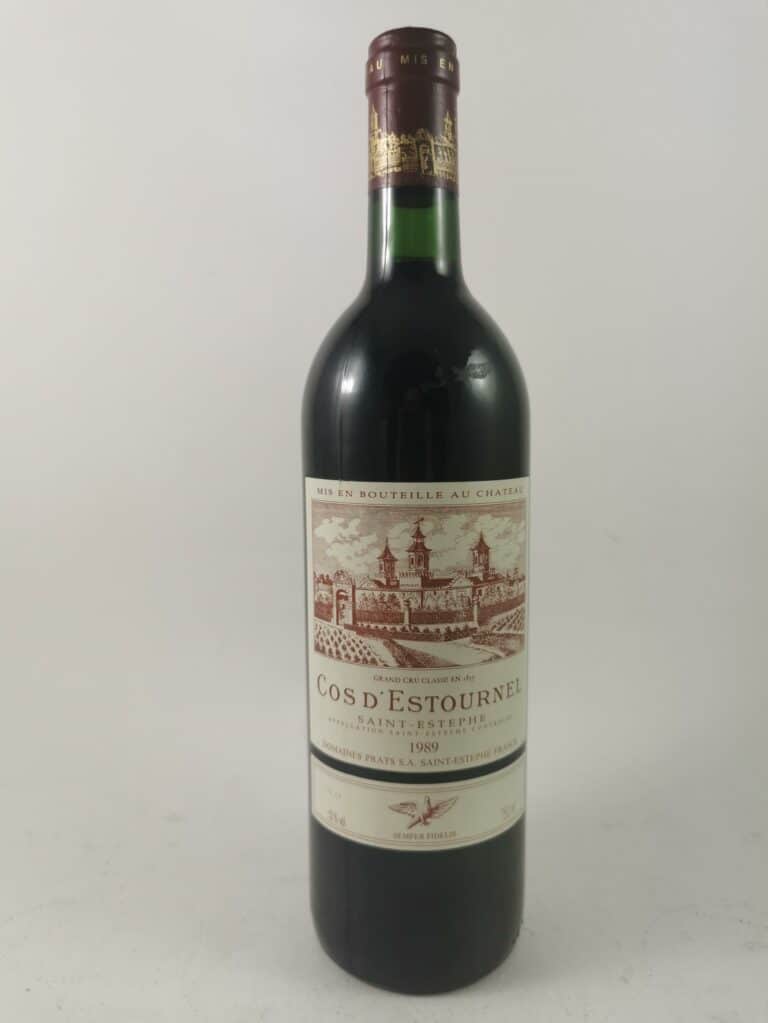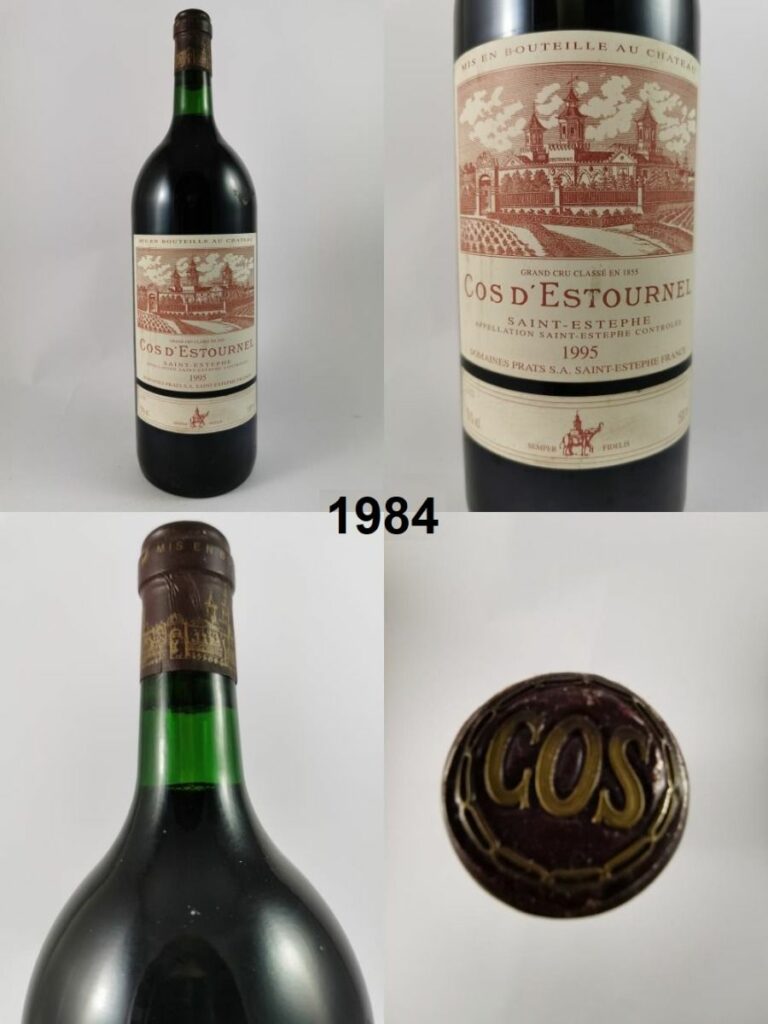Cos d'Estournel
The history of Château Cos d’Estournel
Château Cos d’Estournel, a wine estate in Saint-Estèphe, was sold in 1791 to a certain Louis Gaspard d’Estournel. When his father died, he inherited the estate. At the age of 29, Louis Gaspard d’Estournel decided to devote his life, his health and his fortune to this project. For him, the hills of Cos d’Estournel boast an exceptional terroir. That’s why he decides to take risks in order to advance his property.
From 1821 to 1847, Louis Gaspard d’Estournel purchased a number of neighboring plots. The estate grew from 14 hectares to 45 hectares In 1852, he became the owner of the Cos d’Estournel, Cos Labory and Pomys crus. Following these acquisitions, Louis Gaspard d’Estournel embarked on a permanent process of innovation. His aim is to make Château Cos d’Estournel one of the finest wines in the world. His investments paid off, as the wine from Château Cos d’Estournel became the second Grands Crus classé in 1855. During his lifetime, Louis Gaspard d’Estournel would only know of his wine’s classification as a second Médoc Grand Cru. He died two years before the 1855 classification.
Continuing to innovate and raise the profile of Château Cos d’Estournel, Louis Gaspard d’Estournel set out to discover the Orient. From 1838, the château’s wine was exported to India. He was nicknamed the Maharajah of Saint Estèphe. He even chose to top the Château Cos d’Estournel with monumental Chinese pagodas and sculpted doors directly from India.
In 1852, indebted and ill, Louis Gaspard d’Estournel was forced to sell his properties to London banker Martyns. He entrusted management to Jérôme Chiapella, who already owned Château La Mission Haut Brion.
It was only in 1917 that it was acquired by Fernand Ginestet, before it had already changed ownership 3 times.
Since 2000, Château Cos d’Estournel has been owned by Michel Reybier. Michel Reybier is an investor and wanted Château Cos d’Estournel or nothing. He was seduced by the castle’s history and originality. Michel Reybier and Château Cos d’Estournel are passionate about each other. In this way, it contributes fully to the development of the estate. His wish is to always offer the best, following in the footsteps of Louis Gaspard d’Estournel.
Château Cos d’Estournel’s technical director is Dominique Arangoïts, supported by oenologist Eric Boissenot.
In 2009, Michel Reybier didn’t want to rest on his laurels, so he also made a commitment to the Hetszolo estate in Hungary. But also in Champagne in 2013 and Provence in 2020. All these properties are grouped under a single name: Les domaines Reybier.
In addition to following in the footsteps of Louis Gaspard d’Estournel, Michel Reybier decided to renovate the main building supported by the pagodas, as well as the Chartreuse. Here, Cos d’Estournel’s know-how is passed on in a way that protects and preserves the château.
Château Cos d’Estournel vineyard
Château Cos d’Estournel’s 91-hectare vineyard is located south of Saint Estèphe. Its soils are composed of deep gravel on a limestone subsoil laid out on a plateau as well as the hill of Cos. The name Cos derives from its meaning: hill of pebbles in old Gascon. The central part of Château Cos d’Estournel lies to the east on deep gravelly soil, while the other part lies to the south on gravelly and clayey soil.
The diversity of soils and terroirs offered by nature at Château Cos d’Estournel are at the heart of the Cos d’Estournel style. As a result, Château Cos d’Estournel is considered one of the most renowned wines in the world.
Committed to environmental protection, Château Cos d’Estournel uses the best tools and the most appropriate know-how to ensure the most natural and ecological vineyard management possible.
They even took the initiative of analyzing all the plots to isolate groups of vines by grape variety, age, exposure and quality.
At Cos, the role of our teams is paramount, as most of the activities involved in creating our wines are manual. The pursuit of excellence is a constant feature of Château Cos d’Estournel’s philosophy.
Soil density is 8,000 to 10,000 vines per hectare, with an average vine age of around 45 years, and some very old vines between 80 and 100 years old. The Cos d’Estournel grand vin is made from vines with an average age of 55 years. At Château Cos d’Estournel, each winemaker is responsible for 45,000 vines.
The climate is marine, with milder winters and mild summers for the vines. This proximity to the ocean creates aromatic freshness and complexity in the wine.
The wines are then vinified in the fully gravity-fed winery built in 2000, which features elevator tanks and 72 truncated-cone, isothermal stainless-steel tanks installed in 2003. Château Cos d’Estournel’s vat capacities range from 19 to 115 hl.
The shape of the vats allows for even extraction and better fermentation.
This means that each plot of land is carefully vinified, with the utmost respect for the know-how used.
Wine pairing and structure of Château Cos d’Estournel wines
The grape varieties for Château Cos d’Estournel’s great Bordeaux wine are 66% Cabernet Sauvignon, 32% Merlot, 1% Cabernet Franc and 1% Petit Verdot. On this wine estate, grape varieties are planted and vines are worked according to the plot, the soil and the exposure of the vines. These elements are at the root of the success of Cos d’Estournel wines.
The château’s wines are renowned for their finesse, thanks to their superb terroir. What’s more, it’s a spicy wine with a refined texture and great freshness. On the final note, you’ll find a beautiful balance of aromas and impressive purity.
These are complex wines that can be kept for a long time.
Château Cos d’Estournel has several other bottles of wine, including their grand vin Cos d’Estournel in red and Cos d’Estournel in white. The second wine is Les Pagodes de Cos, both red and white.
Finally, G d’Estournel and Goulée By Cos d’Estournel.
The best vintages to remember for this château are: 2020, 2019, 2016, 2015, 2010, 2005, 1995, 1990, 1986 and 1982.
To match this Saint-Estèphe wine, we recommend a main course of filet mignon, roast duck with cider sauce or beef bobotie, and a hard cheese for dessert.
Interested in Saint-Estèphe wines? See also our wines for the following domains:


